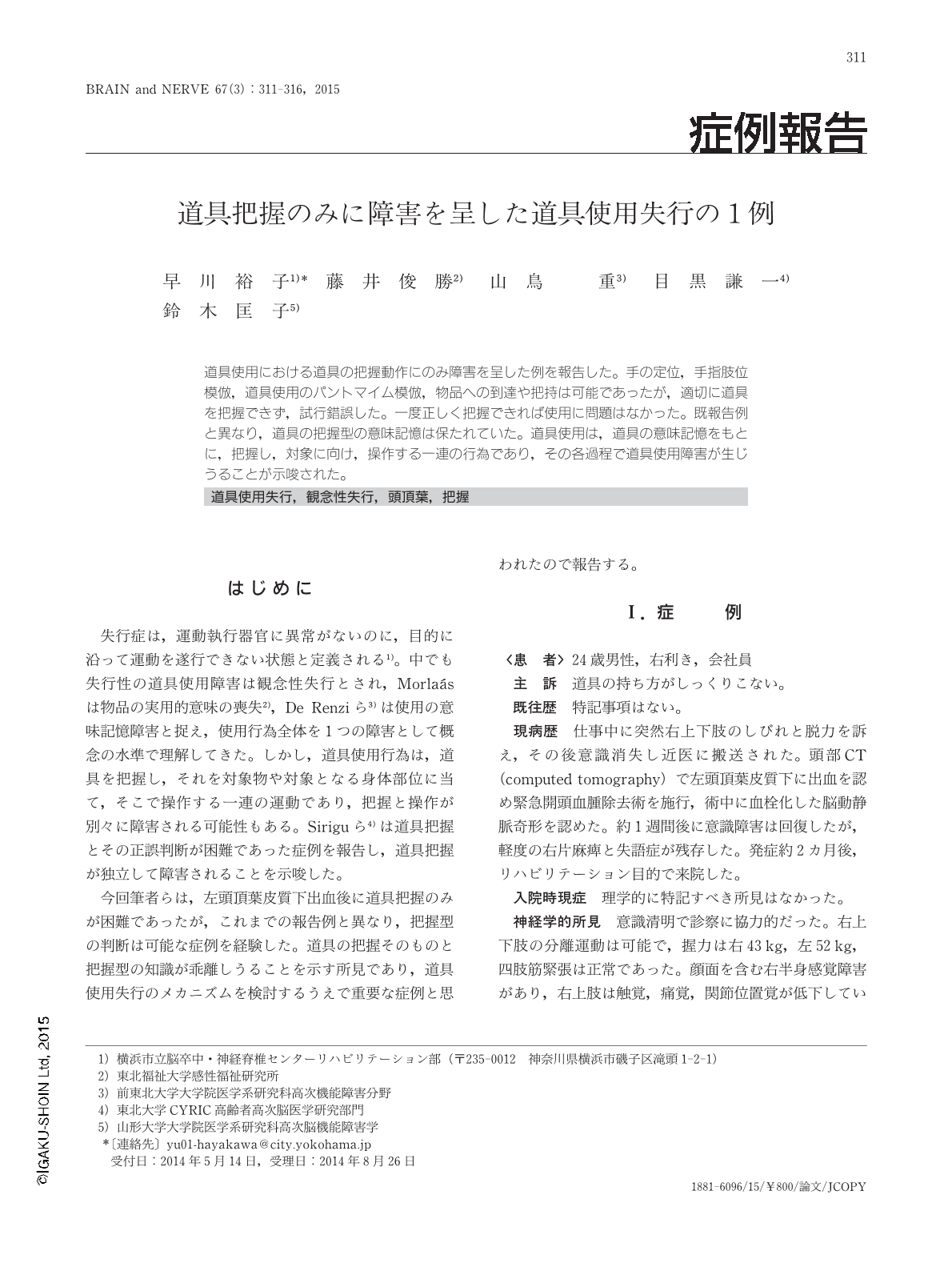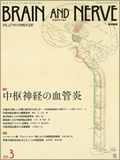Japanese
English
- 有料閲覧
- Abstract 文献概要
- 1ページ目 Look Inside
- 参考文献 Reference
- サイト内被引用 Cited by
道具使用における道具の把握動作にのみ障害を呈した例を報告した。手の定位,手指肢位模倣,道具使用のパントマイム模倣,物品への到達や把持は可能であったが,適切に道具を把握できず,試行錯誤した。一度正しく把握できれば使用に問題はなかった。既報告例と異なり,道具の把握型の意味記憶は保たれていた。道具使用は,道具の意味記憶をもとに,把握し,対象に向け,操作する一連の行為であり,その各過程で道具使用障害が生じうることが示唆された。
Abstract
Impaired tool use is recognized as a symptom of ideational apraxia. While many studies have focused on difficulties in producing gestures as a whole, using tools involves several steps; these include forming hand postures appropriate for the use of certain tool, selecting objects or body parts to act on, and producing gestures. In previously reported cases, both producing and recognizing hand postures were impaired. Here we report the first case showing a selective impairment of forming hand postures appropriate for tools with preserved recognition of the required hand postures. A 24-year-old, right-handed man was admitted to hospital because of sensory impairment of the right side of the body, mild aphasia, and impaired tool use due to left parietal subcortical hemorrhage. His ability to make symbolic gestures, copy finger postures, and orient his hand to pass a slit was well preserved. Semantic knowledge for tools and hand postures was also intact. He could flawlessly select the correct hand postures in recognition tasks. He only demonstrated difficulties in forming a hand posture appropriate for a tool. Once he properly grasped a tool by trial and error, he could use it without hesitation. These observations suggest that each step of tool use should be thoroughly examined in patients with ideational apraxia.
(Received May 14, 2014; Accepted August 26, 2014; Published March 1, 2015)

Copyright © 2015, Igaku-Shoin Ltd. All rights reserved.


